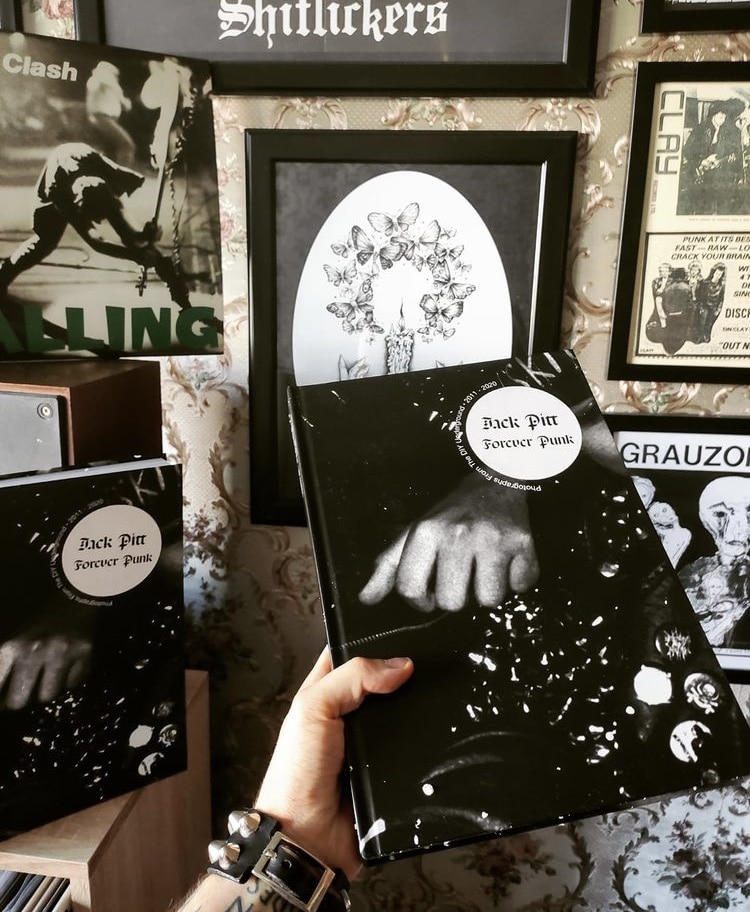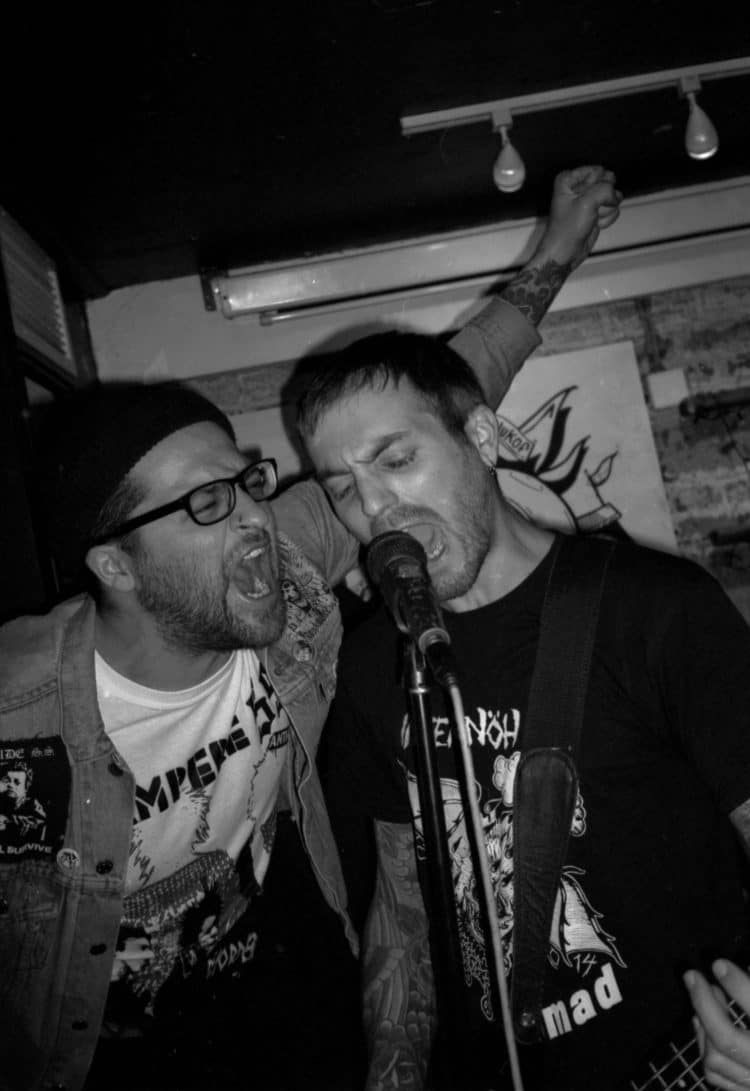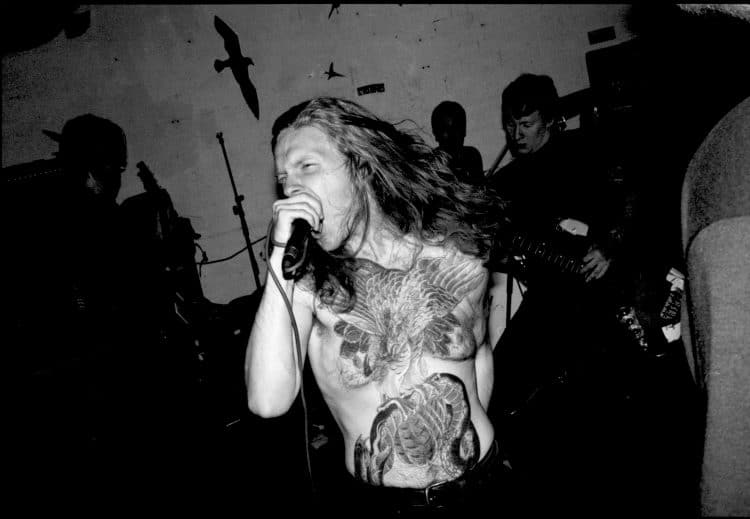How old were you when you first picked up a camera?
My earliest memory of anything involving a camera is a school trip to the zoo when I was 12 and my Dad gave me his old Olympus Trip 35 to use. I actually found the prints of this early attempt at nature photography when I was sorting through my files of negatives earlier this year, but I’d be lying if I said there were any signs of early photographic ability. I messed around with some digital cameras in my teenage years, but it wasn’t until my late teens that I bought another Trip and started to carry it around. I guess that was the start of whatever it is that I do now.
What drew you into the world of live music photography?
I’m not sure it was anything more conscious than wanting to take photos, having a camera in hand, and being at gigs fairly regularly. When I was first taking photos I used to wander around places that I lived, hoping that inspiration would jump out at me, or that I’d stumble upon something compelling. I suppose when you’re first experimenting or trying to find an “artistic identity,” the immediacy that bands can provide makes it an appealing thing to focus on… I just never moved on from that!
Is there one show you shot that’s defined your style to date?
I think the shot of Mystic Inane is a moment where everything I had been trying to do coalesced. The timing was instinctive, but the photo captures a lot of the things I like to see when I develop some negatives… most obviously a sense of emotion and energy from the subject and a sense of interaction with me as the photographer (and by extension the viewer of the photo) which is usually achieved when they’re staring down the barrel of my lens. It felt like a sort of benchmark at a time when I was hitting my stride.

Do you have a favorite band to shoot, and why?
Usually, it’s just the bands I like best, but I’m not sure I can single any out as I’m constantly going through phases in terms of what I’m most interested in. When I’m taking photos I try to make it as natural as it would if I was just watching a band without a camera in hand. Aside from the actual sound of the music, the bands that are the most compelling to watch- whether it be a result of their energy, or something interesting aesthetically- also make for the best photos. If a band doesn’t have something about them, my camera usually ends up back in the case on my waist pretty quickly.
How do you capture the emotion and energy of the band and the audience?
I think I’ve hinted at the answer to this. It wasn’t a deliberate thing and I’m not sure how conscious it is even now, but I think just being “present” whilst the band plays, rather than thinking or acting as though I’m a photographer, helps capture what’s actually going on. I obviously try and anticipate when the most interesting moments are going to happen and make sure I’m stood in a good spot, but I try not to complicate things any more than that. I’ve been taking photos for long enough that it feels like second nature and isn’t something I’m always considering, but I think the best way to achieve something that feels accurate or authentic is just to pay attention to the show in the same way as everyone else in the room.
How important is the venue for your photos? What’s your favorite venue to shoot bands at?
My favorite venues are just the ones where I feel most at home. I like DIY spaces for the connection and community that can be created, something you just can’t expect in more commercially orientated environments. They’re also usually better on a purely practical level because I can get up close to what’s going on. Something unusual or striking as a backdrop is always cool, and when I booked shows in Norwich I always enjoyed the idea of transplanting a punk show into an environment that wasn’t familiar with it. I always appreciate bands that have enough banners to transform the rooms in which they play too.
Before Isolation, do you think that you took going to shows for granted?
I think almost everyone did, to be honest! Having said that I’ve had a few extended periods of time in my life where I wasn’t able to be as involved with punk as I wanted to be. As a result, I was half prepared for the last year and I think I’ve always been a bit more appreciative of the times where I can regularly see bands. The first shows I would go to after not being around punk for months were the absolute best, and ones I’ll always remember. I’m excited to experience that again whenever I get to see a band next. I guess the cliché that “familiarity breeds contempt” is something people say for a reason and complacency can always creep in, but I’ll never tire of those occasional moments you get with punk where the moment feels incredible and exciting.
When shows do come back, do you feel that concert photography will change?
It felt like last summer people were talking about this period of downtime being an opportunity to re-evaluate things and maybe change punk for the better… but the main change I’ve noticed so far is just that more stuff is happening outside. So I guess things will inevitably look a bit different if that is maintained. Beyond that, I’m not really sure and anything I do say will just be wild speculation, which I’m fond of doing but I’m not sure anyone needs to read right now…
Where are you pointing your camera these days?
The short answer is hardly anywhere! Visa troubles over the last six months meant, until recently, I was stuck in a tiny village in England, so I just wasn’t around a lot of the things I usually want to photograph. I’m back in North America now though and can foresee a time where I might actually see a band play some music eventually, so whilst I’ve stopped trying to predict the immediate future I’m hoping I’ll be able to use my camera a bit more often.
Did you find another creative outlet during isolation?
I did a few things here and there, including woodburning and getting back into Warhammer after about 15 years off (if that counts), but I guess the most enduring creative thing I was involved with was working on my own music. One of my bands, Barren Soil, managed to record a load of songs in the autumn of last year, and I spent the following weeks recording vocals in my bedroom. I had never done that before, and usually tried to bash everything out in an afternoon, so I took isolation as an opportunity to obsess over my vocal recording and take my time. I also recorded some more vocals for a project that sounds like the first Discharge 7”, which will hopefully see the light of day soon. Whatever happens in my world, any creative energy I have usually ends up zeroing in on music in some respect.

Talk to us about the creative process and inspiration behind your new book “Forever Punk.”
I had been thinking about, and then inevitably procrastinating on, putting together a book for quite a while. A few people had encouraged me to do something beyond posting photos on social media and I always enjoyed seeing my stuff collected at a handful of exhibitions, but I was always reluctant to commit to the permanency of a book. I talk a bit about this in the introduction to Forever Punk, but it was easy to just meander along without collecting my photos because there was always another show coming up or something more pressing that distracted my attention elsewhere.
So when I suddenly discovered that I had a lot more time on my hands than I was used to, as well as access to all my negatives which had previously been in storage in England, and a desperate need to occupy my thoughts, it made sense to actually commit to this sort of project, even if it scared me. As far as a creative process goes, it’s not any more complicated than just being around punk for a decade and naturally documenting it- there’s never been an overarching theme or intent really. I just looked through basically every photo I had taken in that time and narrowed it down to a few hundred of my favorites, and in the process thought about how I felt about the whole thing and my interactions with photography as an artistic discipline. It was only once everything was almost finished that I realized that Forever Punk provides a snapshot of the last decade of DIY punk, which was a bonus because it could almost signal a sort of conscious documentary intent.

Could you share three photos that mean the world to you and the story behind them?
Detergents, March 2016

I took this photo in Norwich, which is where I lived for the first decade of my adult life. I spent a lot of that time trying to bring bands to the city. This one was in a tiny pub basement that was probably not, if you were being sensible, all that practical for gigs, but I often had to make the best of what was available and I as I said earlier, I liked watching the odd interactions that could happen as a result of people stumbling across a local subculture that they had no idea existed. I picked this photo because it combines a few things, outside of the music itself, that I love about being involved in punk, as well as the kind of memories that are provoked when I look at Forever Punk. Marc and Wes are two mates of mine that I met through music, and with Wes especially, punk has been like a constant binding force for our friendship and has seen us travel to all kinds of places together. I think Wes was at every single gig I ever put on and drew the flyers for nearly all of them too. I couldn’t take any photos of him performing because I was always in the bands he played in, so I was pleased to be able to sneak this one of him into the book.
Reality Crisis, November 2017

2017 was a weird year for me personally and saw me spend a lot of time feeling relatively cut off from punk and other things I had centered my life around. I moved back home with my parents in Essex and desperately worked on finishing my Ph.D. — something that I had begun to doubt I would ever do. It wasn’t like I was totally shut away from the world, but I had next to no income and ended up in a perpetual routine of working all day on my thesis, eating, sleeping, and waking up in a sweat in the middle of the night from stress. After months of this, I gave myself the day off and bunked a train up to DIY Space for London. The heady mix of seeing a totally wild band, being around punk, seeing some of my friends, and a fair amount of Crash N’ Burn/Reality Crisis cider contrasted pretty noticeably with what my life had been like for a while. Definitely one of those moments where punk felt like a pretty magical thing.
Torn Apart, April 2012

This one is special to me because it’s probably one of the first ‘good’ photos I took. In 2012 I was still figuring out what the hell to do in order to get decent results. A lot of that process was based around trial and error, getting stuck in and wondering what I did right for the one or two photos per roll that achieved the kind of results that I was looking for. This photo also makes me think about my personal connection to punk, and it feels quite fitting that the subject is not only someone that I still speak to almost a decade later, but was influential in me wanting to pick up a camera myself. From the start, I’ve always just taken photos of my mates. Those mates just happen to be interesting and talented people…







